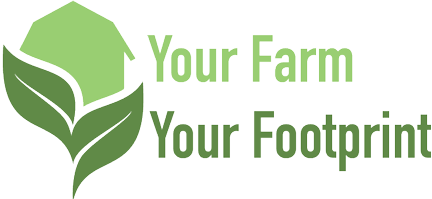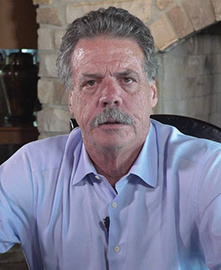News & Media
Dairy continues to reduce greenhouse gas emissions
March 27, 2020
Contact: Shelly Mayer
800-947-7379
mail@pdpw.org
FOR IMMEDIATE RELEASE
Archive of Press Releases: Press Release
Photo/Logo for this press release: Photo/Logo
Dairy continues to reduce greenhouse gas emissions
Figures show that the U.S. dairy industry is making progress in reducing the amount of greenhouse gas emissions released into the environment. But many experts feel more can be done to lower the carbon footprint on farms in the decades ahead.
Mike McCloskey of Select Milk Producers and co-owner of Fair Oaks Farms told participants of recent the Professional Dairy Producers® (PDPW) Virtual Business Conference that the Innovation Center for US Dairy’s Environmental Stewardship committee has been tasked with making the nation’s dairy sector carbon-neutral – or better – by the year 2050.
“The committee hopes to accomplish this goal by helping dairy farms incorporate better cropping systems, develop better manure-based products and more effectively utilize technology to reduce emissions, increase water conservation, and optimize soil health and nutrients,” McCloskey said.
The committee is made up of farmers, cooperatives, processors, farm groups, and advisors that meet throughout the year to set reasonable standards for the industry.
McCloskey said farmers have already made strides in their efforts to become environmentally sustainable. Between 2005 and 2015, emissions on U.S. dairy operations have dropped by 20 percent. He also said farms are using less water and farmland acreage to generate the same amount of milk compared to a decade ago.
Some of the most effective methods producers are using include building methane digesters on their farms and converting animal waste into dry fertilizer products. He also said better feed additives are now on the market to improve digestibility in livestock which lessens the amount of gas cows produce.
McCloskey emphasized the public-awareness factor is critical. He noted that as consumers become more environmentally conscientious, they tend to support industries and buy products from those whose priorities are in line with their own. There’s also an economic component to consider for dairy business owners. Many private and public financial incentive programs are available for producers to develop techniques to enable them to become better environmental stewards.
“We understand this effort cannot work equally for every dairy producer,” he said. “It’s a joint effort to collectively get there as an industry by 2050. We know that not all farms will be able to arrive at the same results within the same time frame.”
Professional Dairy Producers® (PDPW) held the first-ever PDPW Virtual Business Conference March 18-19, 2020 in keeping with its commitment to presenting the 2020 annual business conference to its membership. PDPW is the nation's largest dairy producer-led organization of its kind, focusing on producer professionalism, stakeholder engagement and unified outreach to share ideas, solutions, resources and experiences that help dairy producers succeed.
###
Contact: Shelly Mayer
800-947-7379
mail@pdpw.org
FOR IMMEDIATE RELEASE
Archive of Press Releases: Press Release
Photo/Logo for this press release: Photo/Logo
Dairy continues to reduce greenhouse gas emissions
Figures show that the U.S. dairy industry is making progress in reducing the amount of greenhouse gas emissions released into the environment. But many experts feel more can be done to lower the carbon footprint on farms in the decades ahead.
Mike McCloskey of Select Milk Producers and co-owner of Fair Oaks Farms told participants of recent the Professional Dairy Producers® (PDPW) Virtual Business Conference that the Innovation Center for US Dairy’s Environmental Stewardship committee has been tasked with making the nation’s dairy sector carbon-neutral – or better – by the year 2050.
“The committee hopes to accomplish this goal by helping dairy farms incorporate better cropping systems, develop better manure-based products and more effectively utilize technology to reduce emissions, increase water conservation, and optimize soil health and nutrients,” McCloskey said.
The committee is made up of farmers, cooperatives, processors, farm groups, and advisors that meet throughout the year to set reasonable standards for the industry.
McCloskey said farmers have already made strides in their efforts to become environmentally sustainable. Between 2005 and 2015, emissions on U.S. dairy operations have dropped by 20 percent. He also said farms are using less water and farmland acreage to generate the same amount of milk compared to a decade ago.
Some of the most effective methods producers are using include building methane digesters on their farms and converting animal waste into dry fertilizer products. He also said better feed additives are now on the market to improve digestibility in livestock which lessens the amount of gas cows produce.
McCloskey emphasized the public-awareness factor is critical. He noted that as consumers become more environmentally conscientious, they tend to support industries and buy products from those whose priorities are in line with their own. There’s also an economic component to consider for dairy business owners. Many private and public financial incentive programs are available for producers to develop techniques to enable them to become better environmental stewards.
“We understand this effort cannot work equally for every dairy producer,” he said. “It’s a joint effort to collectively get there as an industry by 2050. We know that not all farms will be able to arrive at the same results within the same time frame.”
Professional Dairy Producers® (PDPW) held the first-ever PDPW Virtual Business Conference March 18-19, 2020 in keeping with its commitment to presenting the 2020 annual business conference to its membership. PDPW is the nation's largest dairy producer-led organization of its kind, focusing on producer professionalism, stakeholder engagement and unified outreach to share ideas, solutions, resources and experiences that help dairy producers succeed.
###






